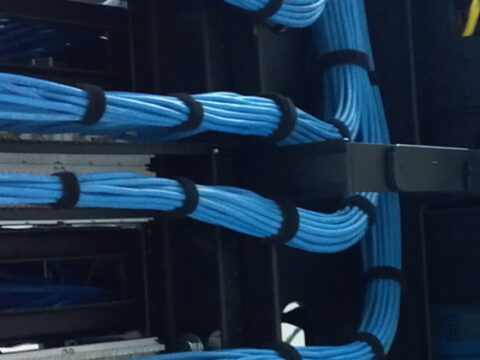What You Need to Know About Structured Cabling
 Structured cabling is a standardized system of cabling and associated hardware used to provide a comprehensive telecommunications infrastructure. This infrastructure supports a wide range of systems such as data transmission, telephone services, security systems, and building management. Structured cabling is essential in commercial buildings, data centers, and even residential properties that require reliable connectivity. ISI Technology provides structured cabling in Denver, Colorado Springs, Boulder, Littleton, Cheyenne, Fort Collins, and surrounding areas.
Structured cabling is a standardized system of cabling and associated hardware used to provide a comprehensive telecommunications infrastructure. This infrastructure supports a wide range of systems such as data transmission, telephone services, security systems, and building management. Structured cabling is essential in commercial buildings, data centers, and even residential properties that require reliable connectivity. ISI Technology provides structured cabling in Denver, Colorado Springs, Boulder, Littleton, Cheyenne, Fort Collins, and surrounding areas.
The system is designed based on standards established by organizations like ANSI/TIA and ISO/IEC. These standards help ensure consistency, performance, and interoperability, making troubleshooting and future upgrades more efficient. A well-designed structured cabling system typically includes six subsystems: entrance facilities, equipment rooms, backbone cabling, horizontal cabling, telecommunications rooms, and work area components.
One of the key benefits of structured cabling is organization. Unlike point-to-point cabling, structured cabling systems follow a clear layout, reducing clutter and improving airflow around hardware. This organized approach simplifies maintenance, minimizes downtime, and enhances the scalability of the network.
Performance is another critical factor. Structured cabling supports high-speed data transfer and can accommodate increasing bandwidth needs. With technologies evolving rapidly, structured cabling makes it easier to upgrade equipment without overhauling the entire system.
Common types of cables used in structured cabling include Cat5e, Cat6, Cat6a, and fiber optics, depending on the required speed and distance. Fiber optic cables are preferred for long-distance and high-speed applications, while copper cables are commonly used for shorter runs and standard office networks.
Proper installation, testing, and documentation are vital. Poor planning or installation can lead to signal loss, interference, and increased costs in the long run.
In summary, structured cabling is the backbone of modern communication systems. It provides a flexible, reliable, and scalable solution that supports a wide range of technologies and ensures optimal network performance.
Want to discuss this further? We’re available by phone or visit our contact page.











